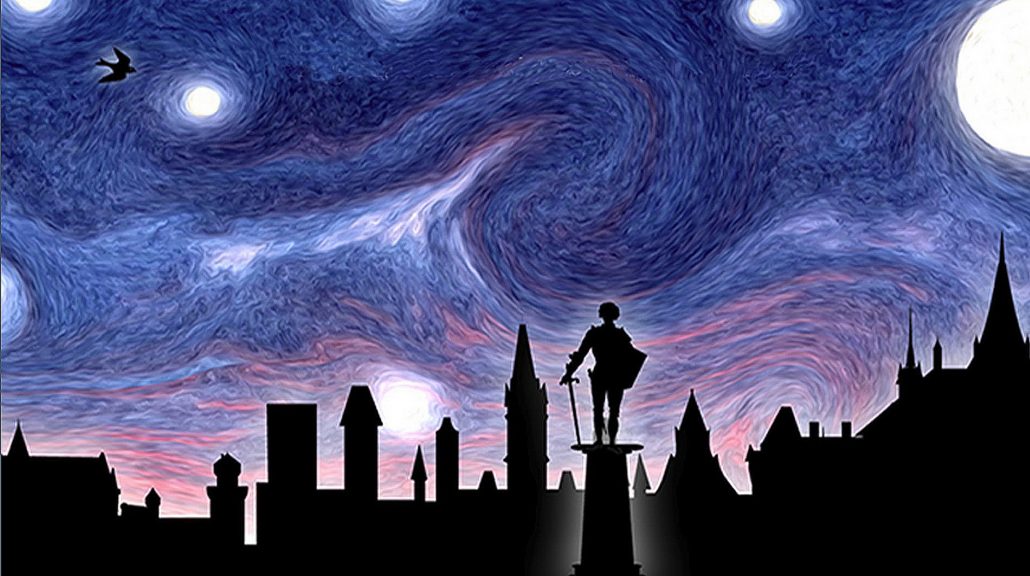Written by Ly – E2 Honor 2018
The fairy tale “The Happy Prince” by Oscar Wilde mentions various common issues in society while delivering different life lessons. The story talks about a Swallow assisting a statue named The Happy Prince to help the poor by ripping the expensive items off of his body. Wilde uses symbolism to support the plot and shows diverse archetypes which the readers can relate to reality. The hardships during the period of time that the story was written helped Wilde connect himself with the story. All of these elements make a clear point about how the beauty of a soul should be emphasized over wealth and fame.
In “The Happy Prince”, symbolism has been used, making every character into an archetype. The Happy Prince, one of two main characters, is someone who only lives in luxury when alive but sees all the miseries in town after he dies. Even when the Prince has nothing left because of helping the poor, he feels genuinely happy. He is a classic image of people growing up, become more mature, and beginning to take responsibility for what is happening around them. But the others only see him as an ugly statue as, according to the Art Professor at the university, “he’s no longer beautiful, he’s no longer useful.“ The Professor stands for people that care about appearances too much. When the dead Swallow is found under the Prince’s feet, the Mayor, as people that want only fame, discusses it by telling the Town Clerk that [they] must really issue a proclamation that birds are not allowed to die here.” The Prince and the Swallow represent Love for their kind actions toward others, but ironically they both die sacrificing for others’ good. At the end of the story, the Prince’s lead heart that cannot be melted and the Swallow were referred to as “two most precious things” by God. “The Happy Prince” reflects real-life society very clear by showing that such an important value as Love is never
prioritized enough by their death.
The time the story was written is accepted as the inspiration for “The Happy Prince” because of their settings’ similarities. Wilde wrote “The Happy Prince” in the Victorian era when the East End of London was suffering from hunger and poverty, and children were forced to do hard labor or become prostitutes in order to survive. The common attitude at the time was described as “the poor were improvident, they wasted any money they had on drink and gambling.”. As a result, parents did not have money to buy food or necessary items for their children. The same situation is happening in the story. Writing a fairy tale in such a hard period of time like this definitely made Wilde weave many emotions into the story’s tone making it a playful, bright tone followed by irony and tragedy. When the Swallow first meets The Happy Prince, their conversation starts off strangely:
“Who are you?” [the Swallow] he said.
“I am the Happy Prince.”
“Why are you weeping then?” asked the Swallow.

As named The Happy Prince, the readers would think that he must be a delightful main character. Instead, the story is twisted. The Prince feels sad and cries, regretting that he didn’t know anything about misery when he was alive. Now that he is dead, people worship him, make him a statue so high that he sees all the miseries in the town but he cannot do anything. This somehow connects Wilde himself who felt so hopeless that he could not do anything for the people for the time being. In the story, it seems like the solution Wilde thought of was Love, sending the readers an important message to learn by heart.
Love is apparently the most beautiful thing in “The Happy Prince” being the reason for all of the good deeds in the story. Near the end of the tale, the Prince even tells the Swallow that “you must kiss me on the lips, for I love you.” and so they kiss. Right after that, the Swallow “fell down dead at [The Prince’s] feet.” The last thing the two main characters experience is Love before they leave the world. It looks almost like they become lovers, despite the fact that a bird and the other being the inanimate statue of a dead person. But as clear as it is, it does not make them bad since it’s their feelings for each other that make the Swallow stay and helps the Prince. These prove the Prince’s statement that “[Love] is more precious than emeralds, and dearer than fine opals. Pearls and pomegranates cannot buy it, nor is it set forth in the marketplace. It may not be purchased of the merchants, for can it be weighed out in the balance for gold.” “The Happy Prince” helps readers reflect on themselves through the symbolism in each character representing each archetype.
It also connects to Wilde’s thoughts and feelings with the tough Victorian era’s stage, expressing his wish to solve the problem by sharing each other. Therefore, Wilde was stating his solution by indicating that Love is the root of every good thing which means it can change the world as a soul full of Love is a beautiful soul. It might be hard to be such, as the Swallow and the Prince are destined to be dead in the story, but it is apparently worth it to spread the Love.





